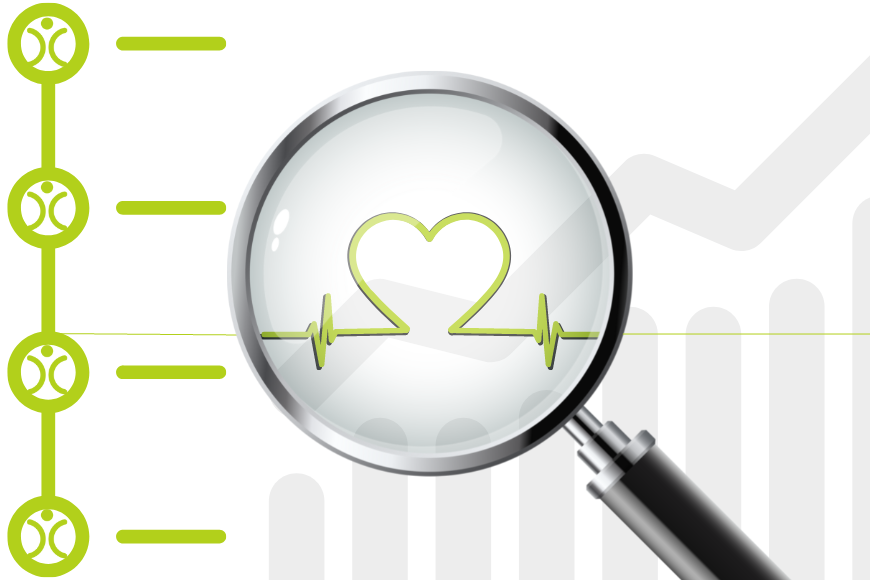Timeline – The Heartbeat Of Your Working Day
6 Feb 2023
One way of looking at how you engage with your CRM is to envisage it as a timeline of events. Ideally, you are logging all your work interactions within your CRM. It stands to reason that you should be able to view and retrieve this information in a logical way. This is irrelevant of which department you work in, or with areas of the system you use. In today’s blog post, we’ll look at how different businesses and departments engage with CRM and how using the Timeline feature will benefit your day-to-day.
What is Timeline?
Traditionally, if you look at a Company record in your CRM, you will find a list of related entities across the bottom of the screen and under those tabs, you’ll see related entities. Under the Contacts tab, you’ll find all the Contacts linked to that Company, under the Emails tab all linked Emails, and so on. This is the same across the board – not just for Companies but also for Contacts, Projects, Helpdesk, Opportunities etc.
Timeline brings all of that together and pastes it into one list, but with a few key differences. More on that below.
Before that, let’s dispel a couple of myths.
Firstly, just because you have x number of departments in your business, doesn’t automatically mean you need x number of different software solutions. Generally, this can all be managed within your CRM. A bold claim perhaps but I’ll explain.
Secondly, your USP business idea does not mean you need a bespoke software writing. One thing I hear time and time again is when clients tell me “We do things a little differently”. That is great, and in this post, we’ll look at how those different scenarios can be catered for using a customised CRM solution.

Do we have what it takes?
We don't restrict which features you have access to in OpenCRM based on how many users you have. You get everything right out of the box. Click to find out if we've got the features you need.
find out moreWhy don’t you need different Software for each Department?
If we strip things back to basics, most people’s jobs involve managing a combination of calls, meetings and tasks. Right there, you are talking about a fundamental feature of CRM, which is the ability to record your past, ongoing and future interactions – Activity Management. They might relate to a project you are managing, a sale or some marketing, but the functionality at its core is the same.
Of course, there are different factors involved in how departments work. Support teams work to SLAs, Marketers want to track success benchmarks and ROI whereas Project Managers need to assess the steady progress of their Projects.
For this reason, you can pick and choose which modules you need to see and pin them to your timeline. What’s more, you do this on a per-module basis.
Support can look at a Company record and immediately see a list of Tickets that have been logged for them. Whereas someone in Marketing will want to look at all the Campaigns and emails associated with Contacts in their system.
Data Visibility
A key factor of a CRM system is giving your team that 360-degree view of what is happening within the business. Timeline takes this into account, so you can always adjust your filters, have a quick look at another set of data relating to your client, and then reset your defaults to the list you use the most.
Within the Timeline, you’ll also find an embedded Keyword search. If a Contact is linked to multiple Projects, your project manager can quickly find the exact record they are looking for with minimal fuss.
Playing to the Strength of other Apps
Of course, there are great pieces of software out there. Marketing departments love Stripo for email template design, or MailChimp for sending Campaigns. Most of you sit in your Outlook inboxes for emails. Your finance team lives in accounts packages such as Xero or Sage 50. We’re not about reinventing the wheel, Instead. we prefer to help you join the dots and wherever possible, connect these systems to your CRM. That way you harness the power of those tools, bringing data visibility into the CRM. Remember where I mentioned that 360-degree view of the client? This effectively means that your CRM contains a good snapshot of everything you need to know.
My Unique Business – My Unique Solution
The same principles can apply to a very bespoke system to meet your business’s unique USP requirements. Often this means streamlining the modules available. Remove anything you don’t need. Customise, Add new fields, relabel and really make the system yours. We often tell clients – set up the system to use the language that works for your business, not the other way round. Use the phrases and terminology that you are comfortable with.
With Timeline, you can further drill down into that streamlined system to really give you all the vital information relating to a record on one single screen. Why be content with having to search for information, when you can have it presented to you?
Timeline Usage
There are a couple of nice little shortcuts and tips and tricks on the Timeline too. Firstly, there’s a quick visual indicator to let you know what is overdue. Activities not yet done, Opportunities past their expected close date, overdue Invoices, that kind of thing. They are set to display as red icons to make them stand out.
To dive into the items on your timeline, you can either click the icon to open that record in a pop-up or click the module name above the relevant entry to dart straight to that item in question. It’s not just about seeing the headers but being able to navigate your way around your day-to-day.
Who can see What?
Timeline gives your users quick access to the data that people need to see, But you also need to be mindful of the security around your data. There is a fine balance between getting those permissions right without being overly restrictive. The good news is that Timeline (as with Reports, Views and other data filters) is designed with your permissions model in mind. It won’t give users a backdoor into data they shouldn’t have access to.
In all of the above, Timeline is the glue that keeps things together.
My role is to build our Customer Success team and I work with our clients and prospects helping them get the most from their subscription – it is a fun challenging role as no two days are the same. When not in the office I’ll be either making a noise on my guitar or getting my trainers on for a run out in the Yorkshire Dales, North York Moors or the Lake District.